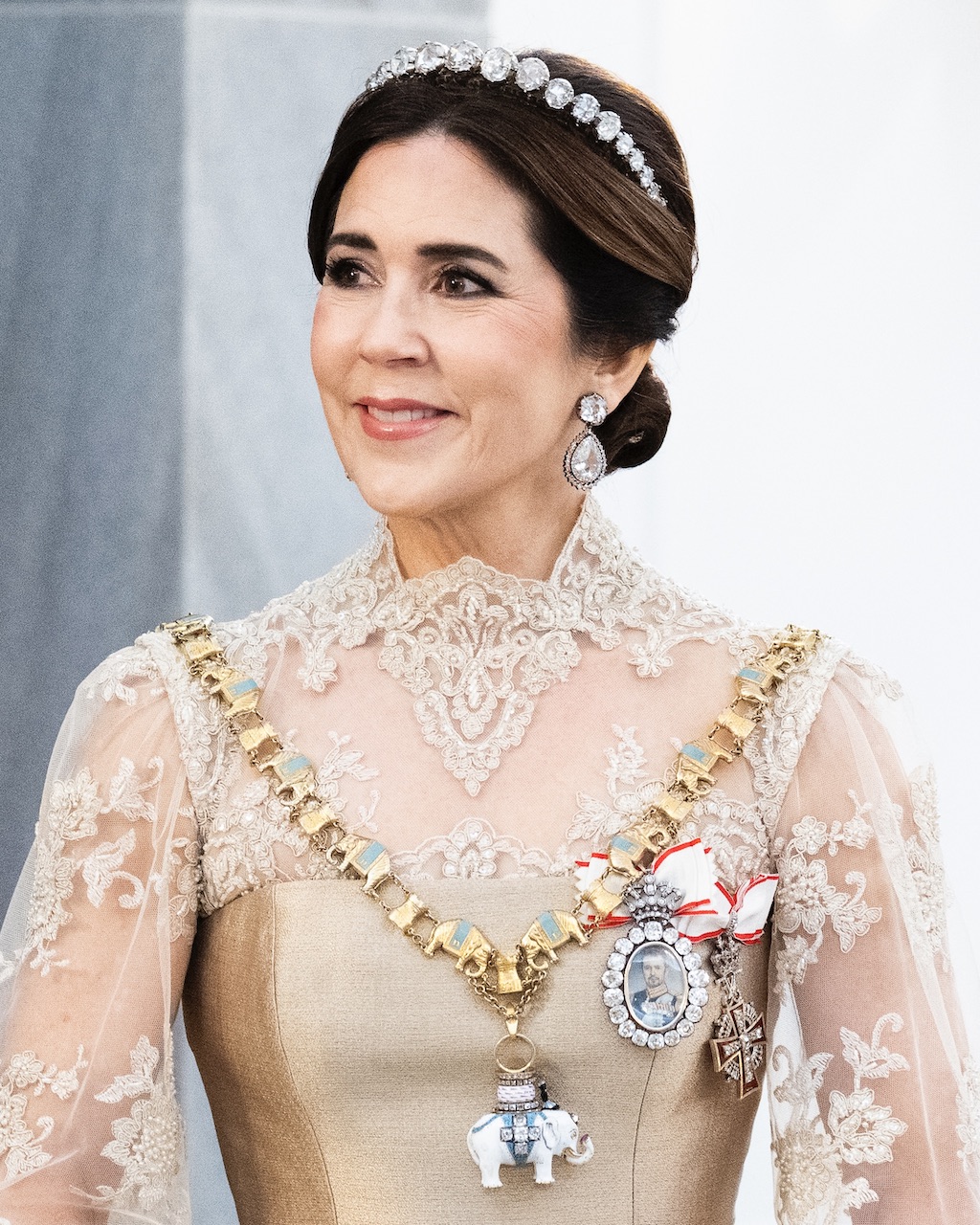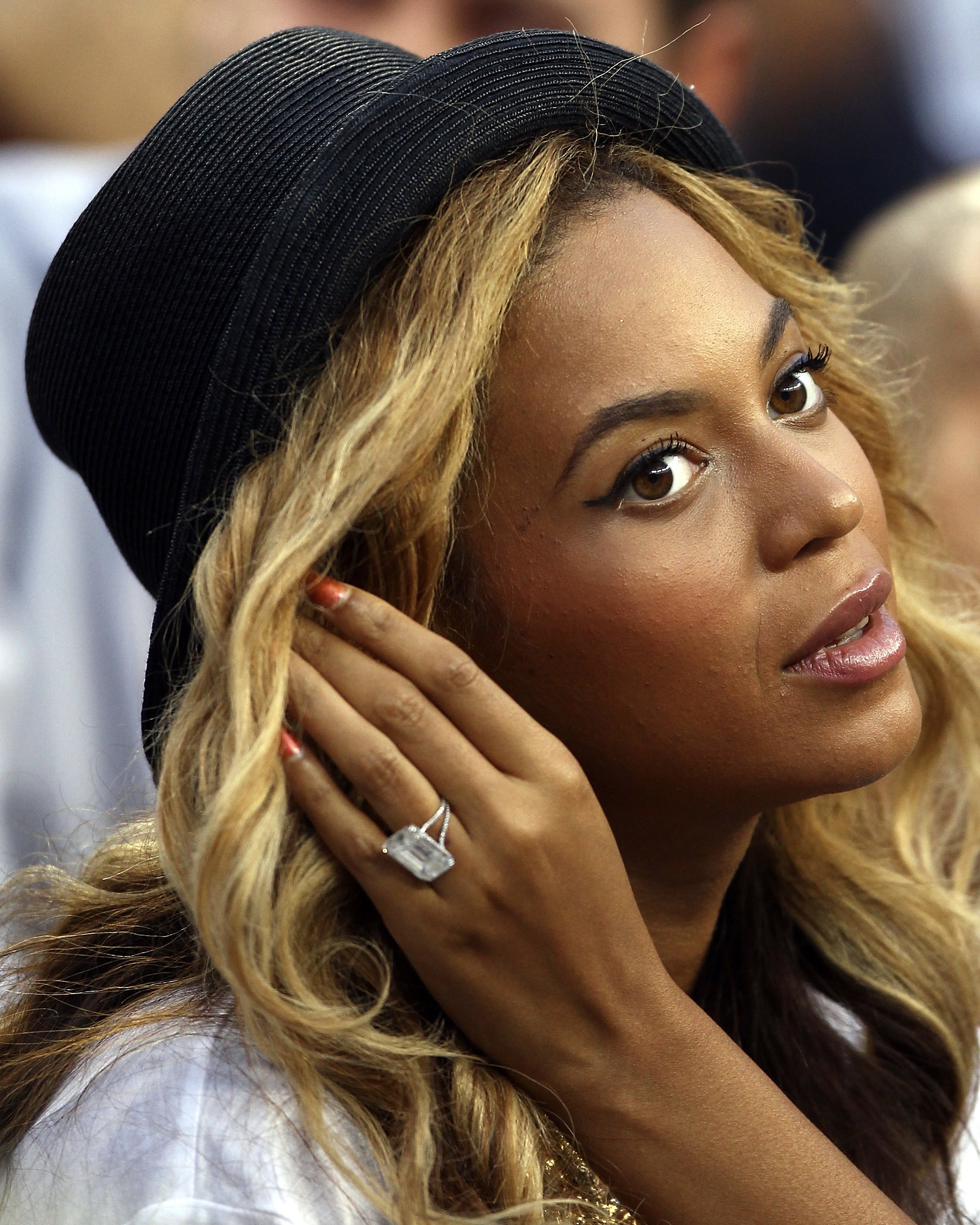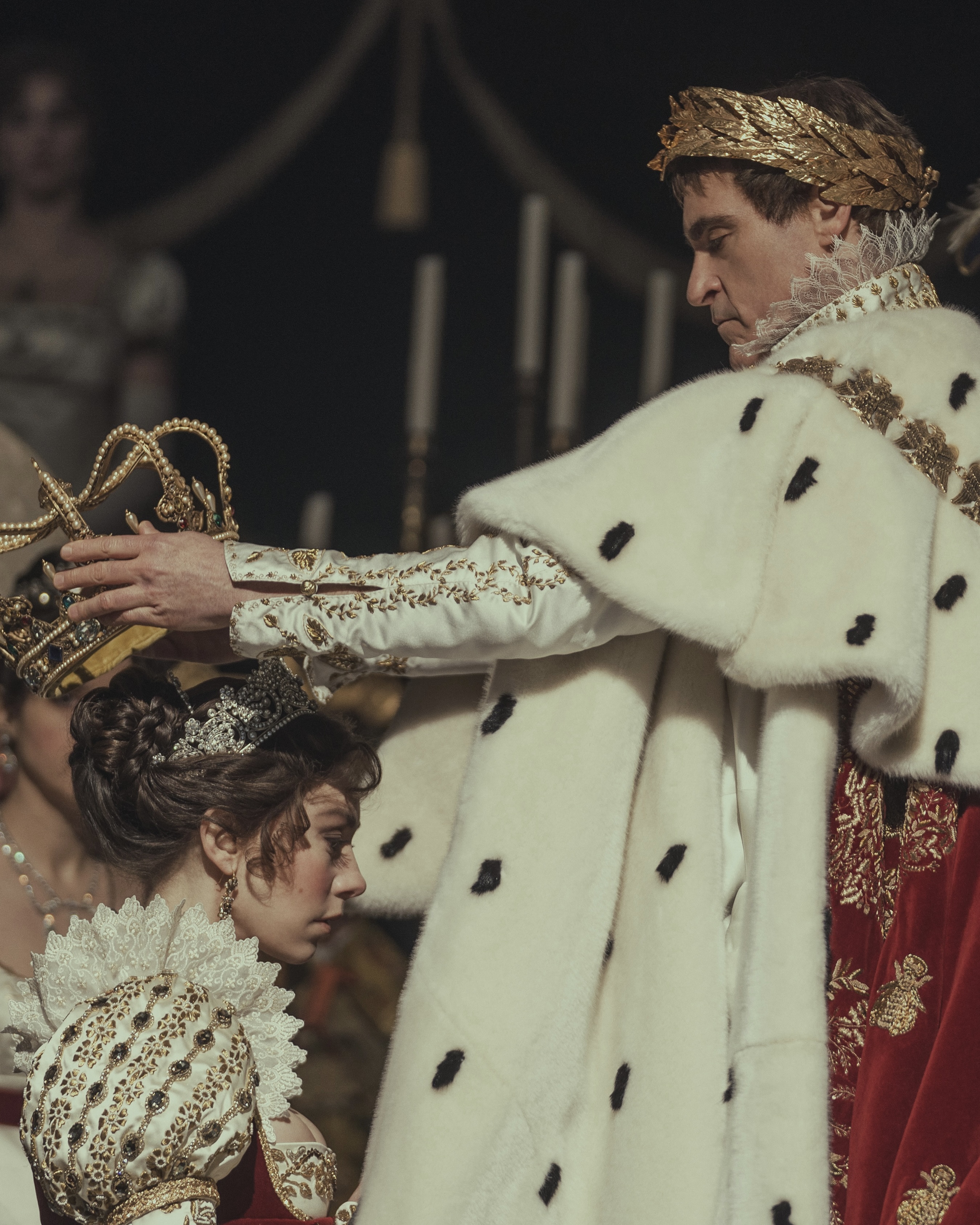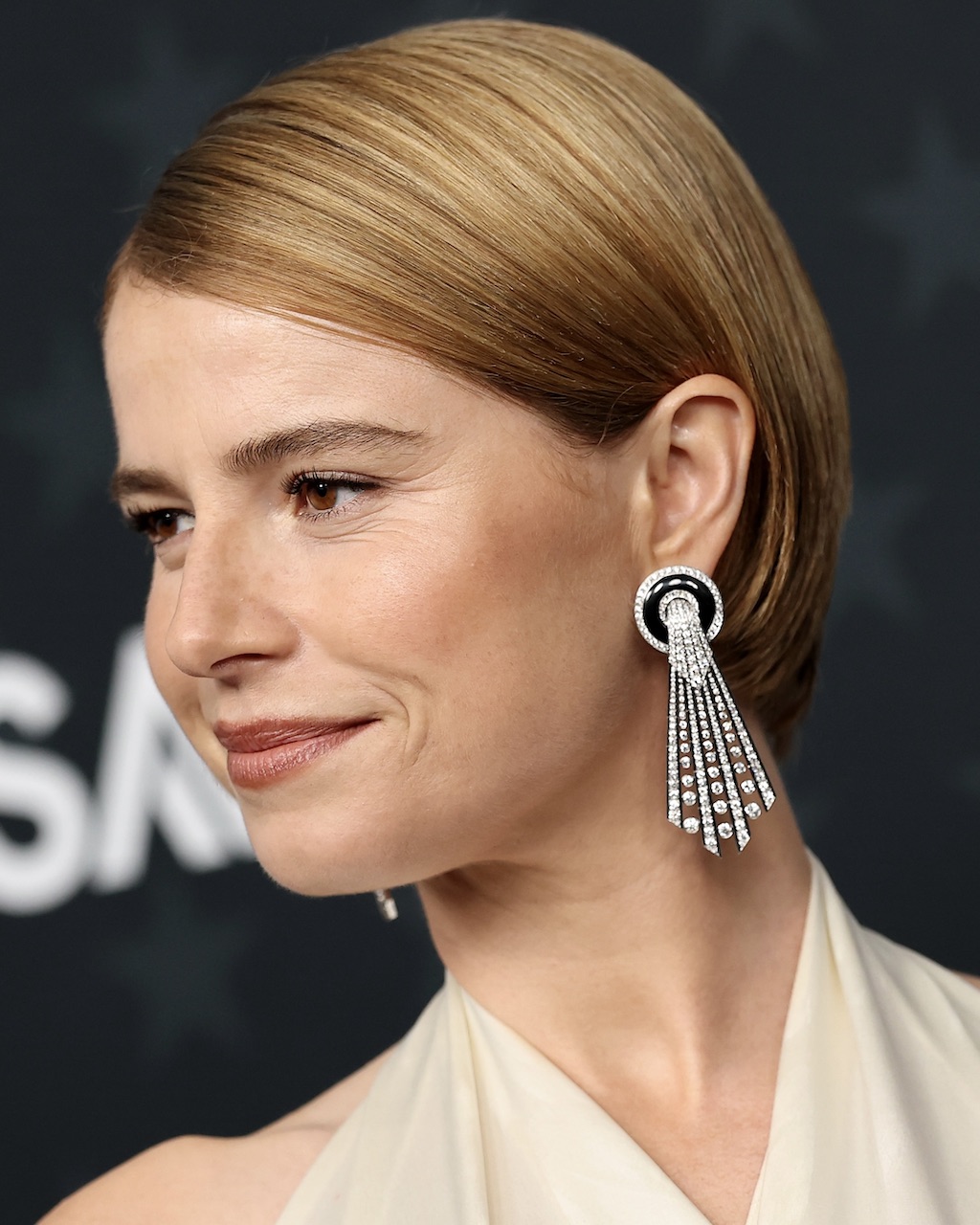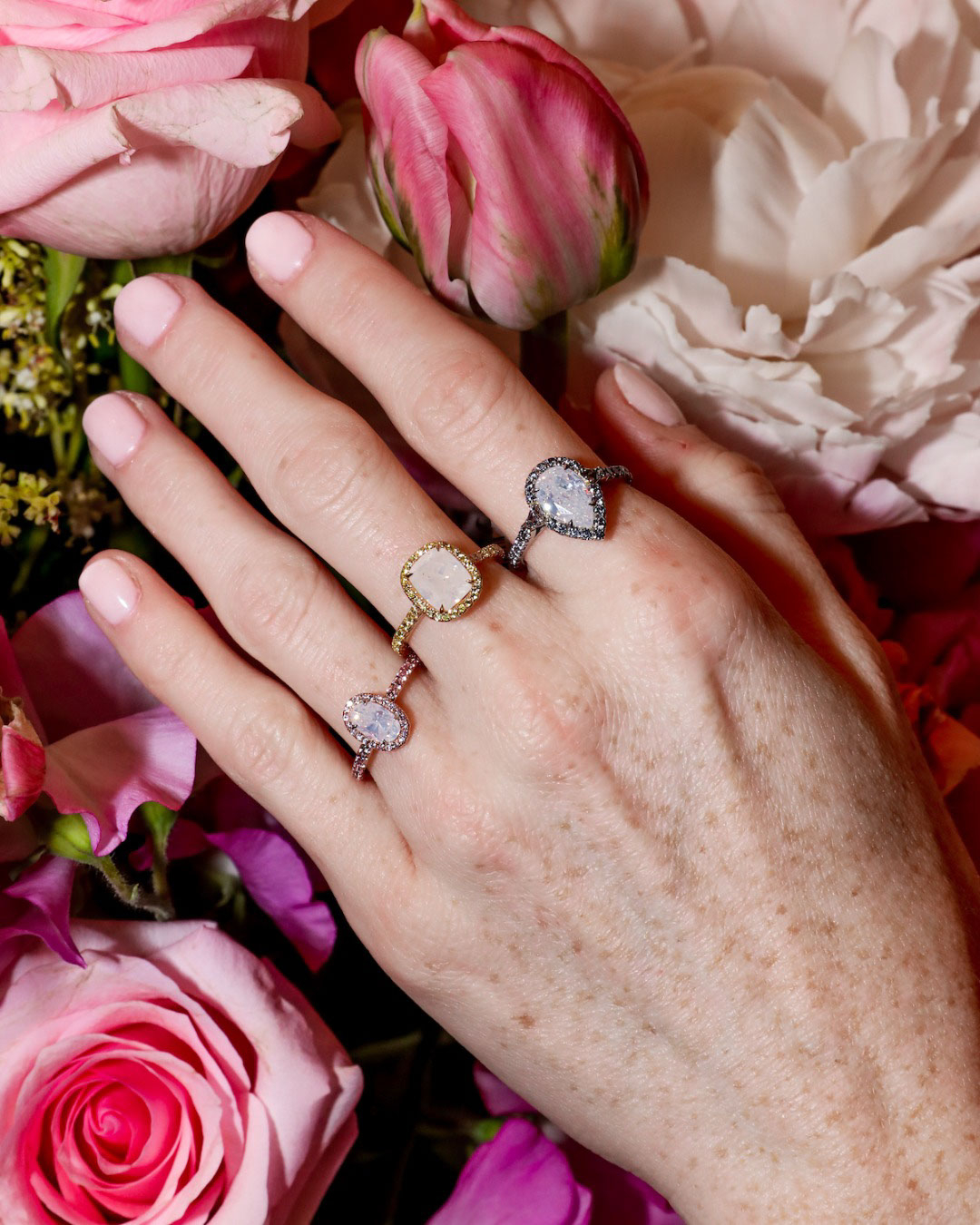Historic Diamonds / Famous Diamonds
Is the Black Orlov Diamond Really Cursed? The Shocking Story Behind the Legend
By Shelley Brown, Updated August 4, 2025
Believed to be stolen from a sacred statue and blamed for a string of mysterious deaths, the Black Orlov has long been shrouded in myth and superstition. From royal scandals to a Hollywood near-miss, this infamous black diamond’s story is as dark and dazzling as the gem itself.

The Black Orlov Diamond (Getty Images)
Was the Black Orlov ever cursed? The mysterious Black Orlov—one of the world’s most famous and enigmatic black diamonds—has a reputation that rivals any Hollywood thriller. Its history is packed with twists and turns, larger-than-life characters, and unanswered questions that blur the line between fact and fiction. From sacred origins to supposed suicides, this legendary 67.49-carat gem has long been shrouded in superstition and lore.
Meet the Author

- Shelley Brown is a seasoned editor with over 15 years of experience covering fashion, engagement rings, bridal jewelry, and diamond trends.
- She holds a Master’s degree in Journalism from New York University.
- She was previously the Senior Fashion Editor at The Knot and has been quoted as a bridal and jewelry expert by Good Morning America, Vogue, Refinery29, and more.
So, is the Black Orlov truly cursed, or simply misunderstood? Read on for the full story behind this captivating natural diamond, including the dramatic events and characters that have shaped its dark legend.
What Is the Black Orlov Diamond?
The Black Orlov is a 67.49-carat cushion-cut black diamond known as much for its dramatic history as its mesmerizing beauty. Unlike traditional colorless diamonds, this rare gem belongs to the category of fancy black diamonds—a group valued for their opaque, metallic luster and mysterious aura. Set in a brooch-style pendant surrounded by white diamonds and suspended from a necklace of 126 diamonds, the Black Orlov is one of the largest black diamonds ever discovered and among the most famous in the world.
Its origins remain murky, but the Black Orlov’s allure is undeniable. Whether it’s the supposed curse, its journey across continents, or its dazzling public appearances, this natural diamond continues to captivate collectors, historians, and Hollywood alike.
Origins: The Eye of Brahma and the Indian Legend
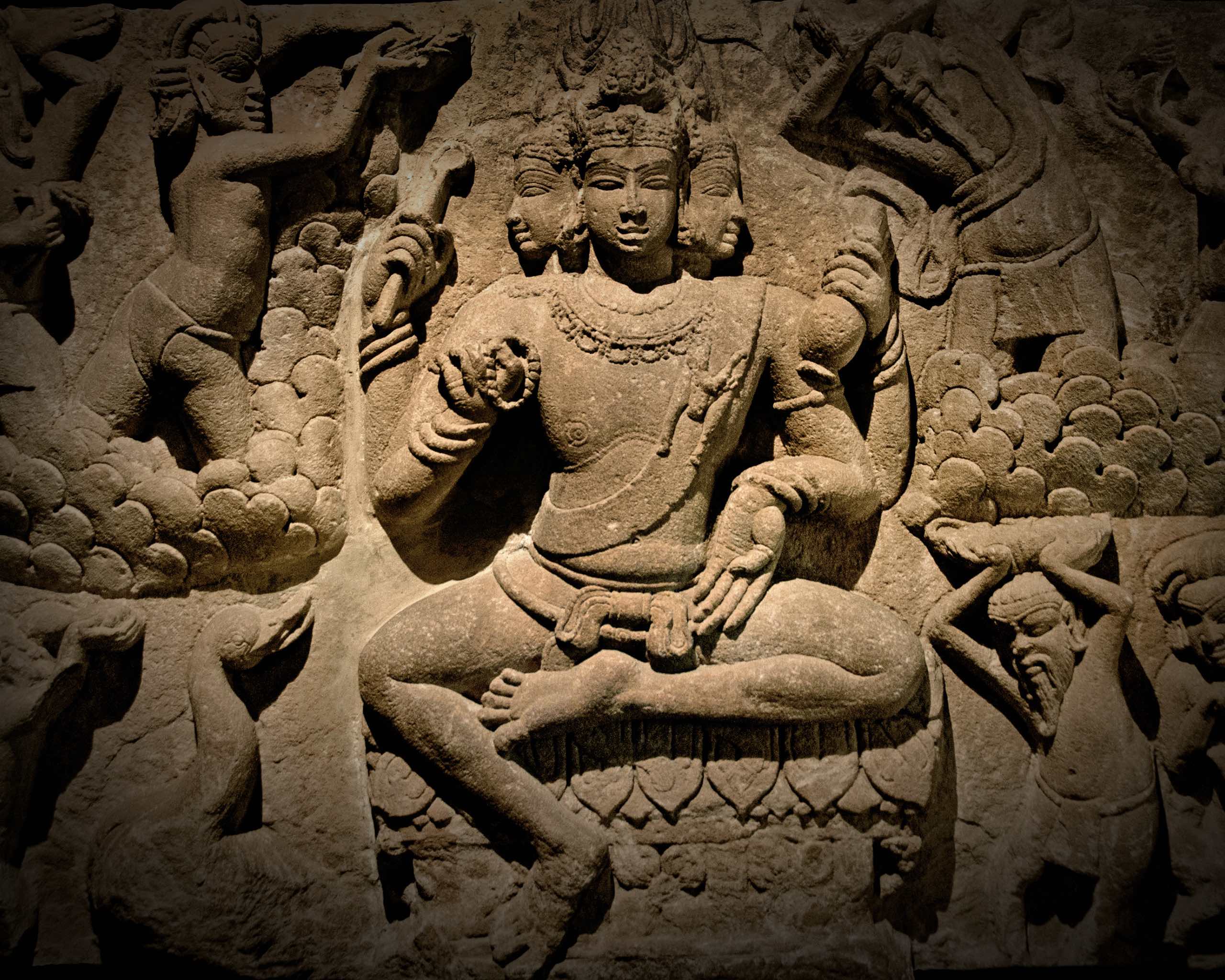
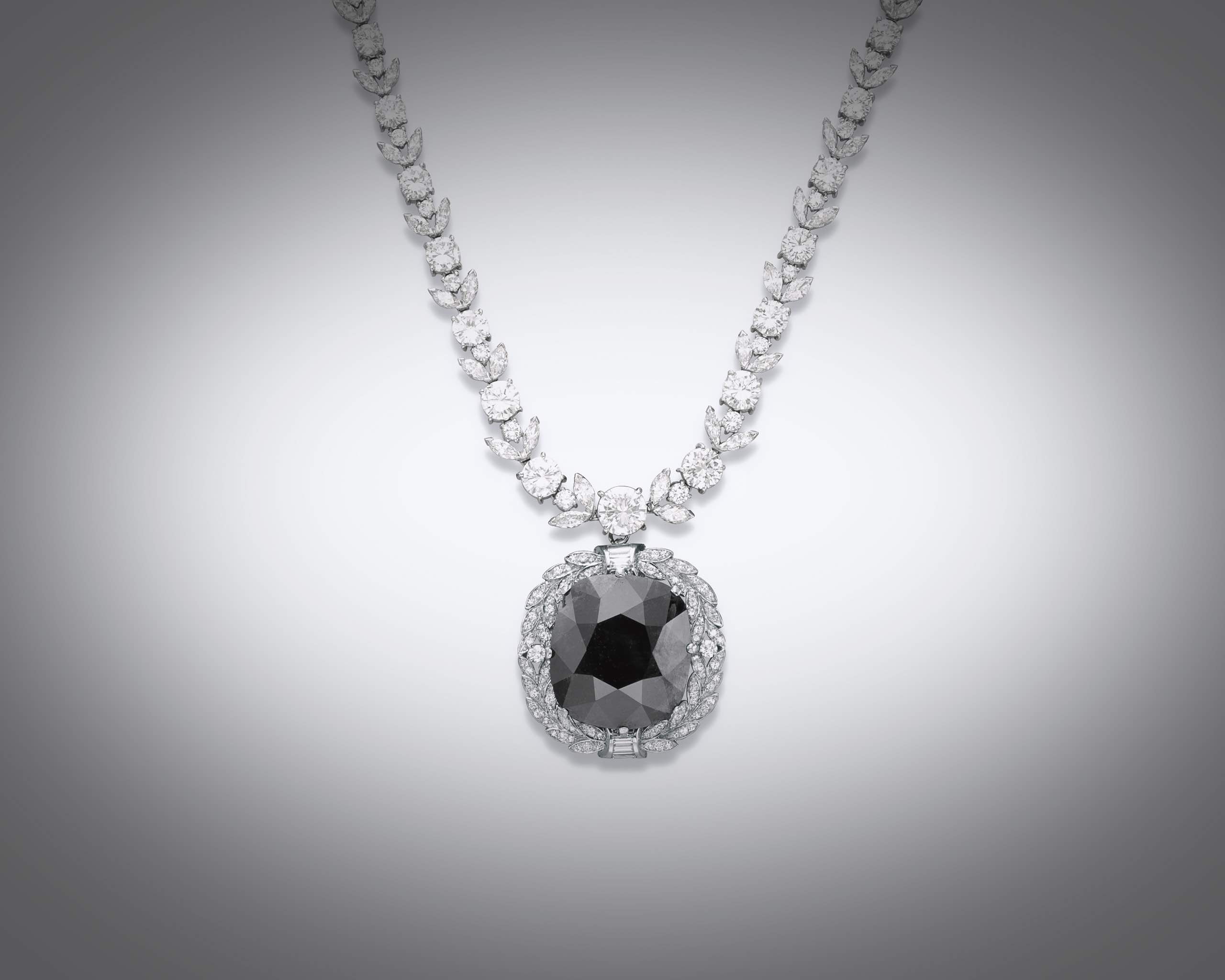
Flashback: 19th-century India. A Hindu monk steals a 195-carat black diamond from the head of a Brahma statue in Pondicherry. Because of its sacred placement, the gem became known as the Eye of Brahma. But the Hindu God of Creation is not one to trifle with—especially when a natural diamond is involved. According to legend, the monk was soon murdered. While some accounts question whether he ever existed, persistent rumors claim Brahma cursed the diamond, bringing misfortune to all who come into contact with it. An eye for an eye, one might say.
Russian Royalty and the Black Orlov Curse
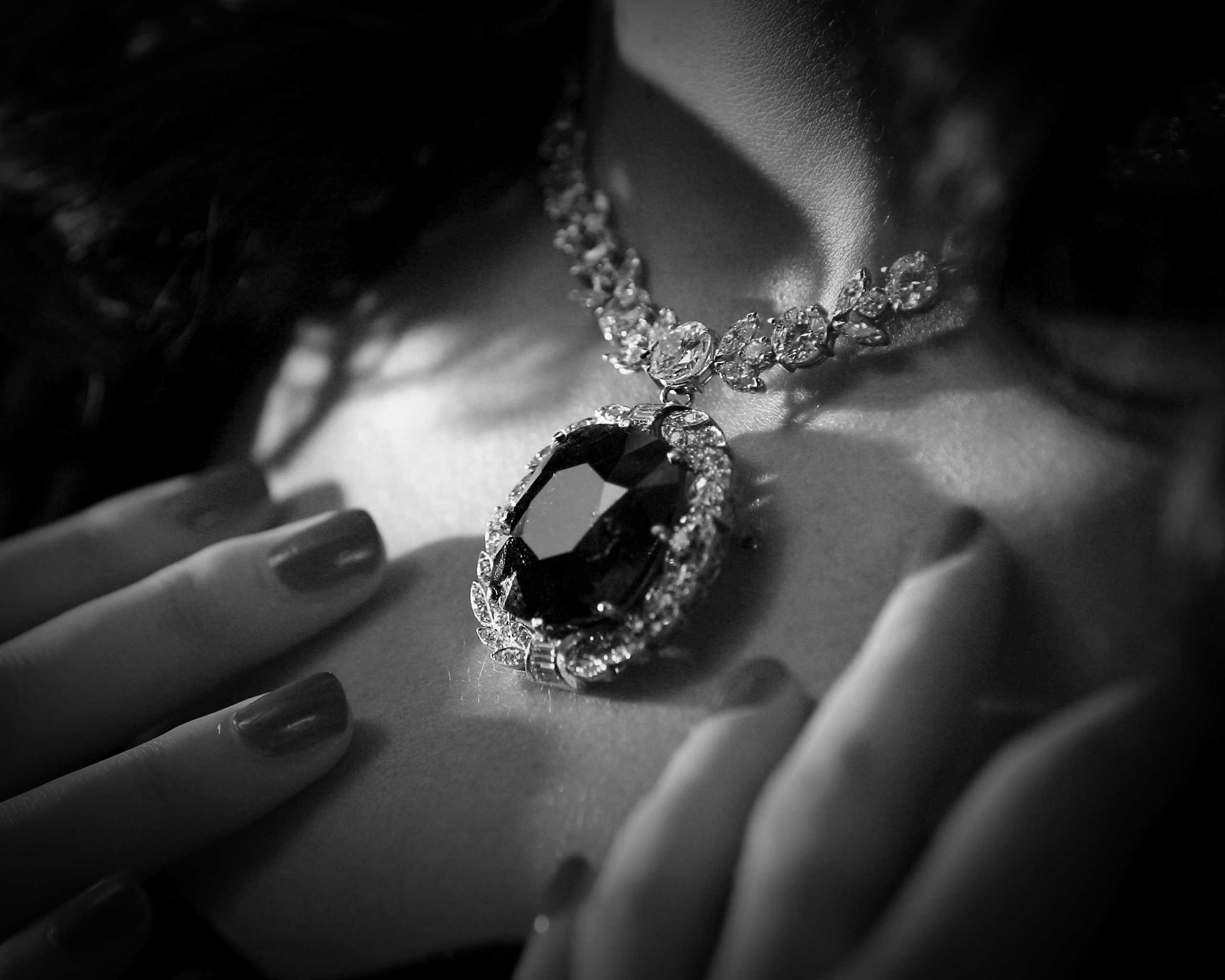
The origins of the Black Orlov are equally murky. Many leading gemologists argue that India is an unlikely birthplace for the gem, as the country is not known for producing black diamonds. Skeptics also point out that the color black holds little cultural significance in Hindu tradition and is often viewed negatively. But fact-checking was no easy task in the 19th century, and the story was simply too captivating to fade away.
How the diamond eventually made its way to Russia and came into the possession of a woman named Princess Nadia Vyegin Orlov is another mystery. For one, there is no historical record of such a princess. Still, it was around this time that the gem, once known as the Eye of Brahma, was renamed the Black Orlov.
Suicides or Coincidences? The Controversial History
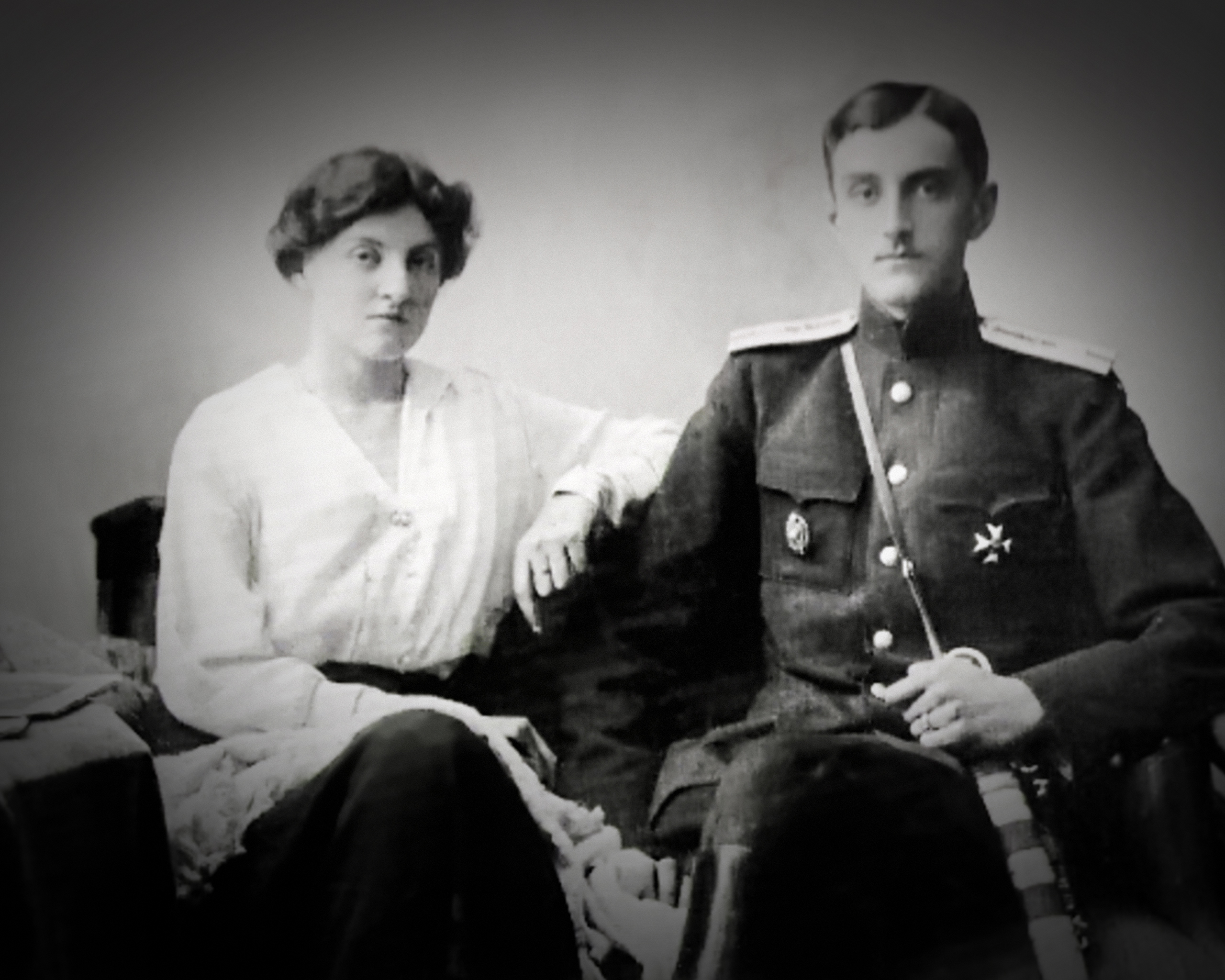

The Black Orlov is rumored to be responsible for three suicides during the first half of the 20th century. The first involves a European diamond dealer named J. W. Paris, who brought the valuable gem to the United States in 1932. Shortly after finalizing its sale, he reportedly jumped to his death from a Fifth Avenue skyscraper. There is just one inconvenient detail: despite the persistence of this story, no official record of the incident exists.
Fifteen years later, two Russian princesses—both said to have owned the Black Orlov—allegedly met the same fate. After fleeing Russia and settling in Europe, the women were reportedly driven to suicide in 1947. But as with the Paris account, their identities are difficult to verify. One was named Princess Leonila Galitsine-Bariatinsky, yet the only woman by that name had already died in 1918 in Switzerland, at the age of 102. The second, Princess Nadezhda Petrovna Orlov, did live in Europe at the time, but she would have been in her late eighties. That is an unusual age for someone to take her own life over a supposed romantic heartbreak, as the story suggests.
In the end, the legend surrounding the Black Orlov seems to crumble under scrutiny.
A Diamond Recut to Break a Curse
Fabricated stories, superstitions, and well-timed publicity stunts have followed the Black Orlov for decades. For a black diamond of such striking brilliance, only the darkest fictions seem fitting. Yet one tale stands apart for the boldness of its action. In the 1950s, a man named Charles F. Wilson purchased the gem and, determined to break its supposed curse, had the original stone cut into three separate pieces. His reasoning was simple: divide the diamond, and you divide its dark energy. The result is the 67.49-carat cushion-shaped Black Orlov we know today. As for the other two stones, their whereabouts remain unknown, adding yet another layer of mystery to this already storied gem.
The Black Orlov and a Missed Date at the Oscars


Felicity Huffman was expected to wear the Black Orlov diamond necklace at the 2006 Academy Awards. Nominated for Best Actress thanks to her performance in Transamerica, Huffman walked the red carpet in a romantic black gown with a plunging neckline and pear-shaped diamond drop earrings — but no necklace.
After decades out of public view, the infamous fancy black diamond had resurfaced the year prior at an exhibition in London. A spectacular 67.49-carat natural marvel, set within a diamond-laurel wreath and suspended from a necklace of 126 diamonds, it was certainly Oscar-worthy. But the Desperate Housewives star appears to have had a last-minute change of heart. Or was it something more?
That evening, Reese Witherspoon took home the coveted golden statuette. Perhaps if Huffman had worn the necklace, her misfortune might have gone far beyond losing an award. Though the diamond’s color is closer to gunmetal than pure black, its reputation is undeniably dark.
Why the Black Orlov Diamond Still Fascinates Today
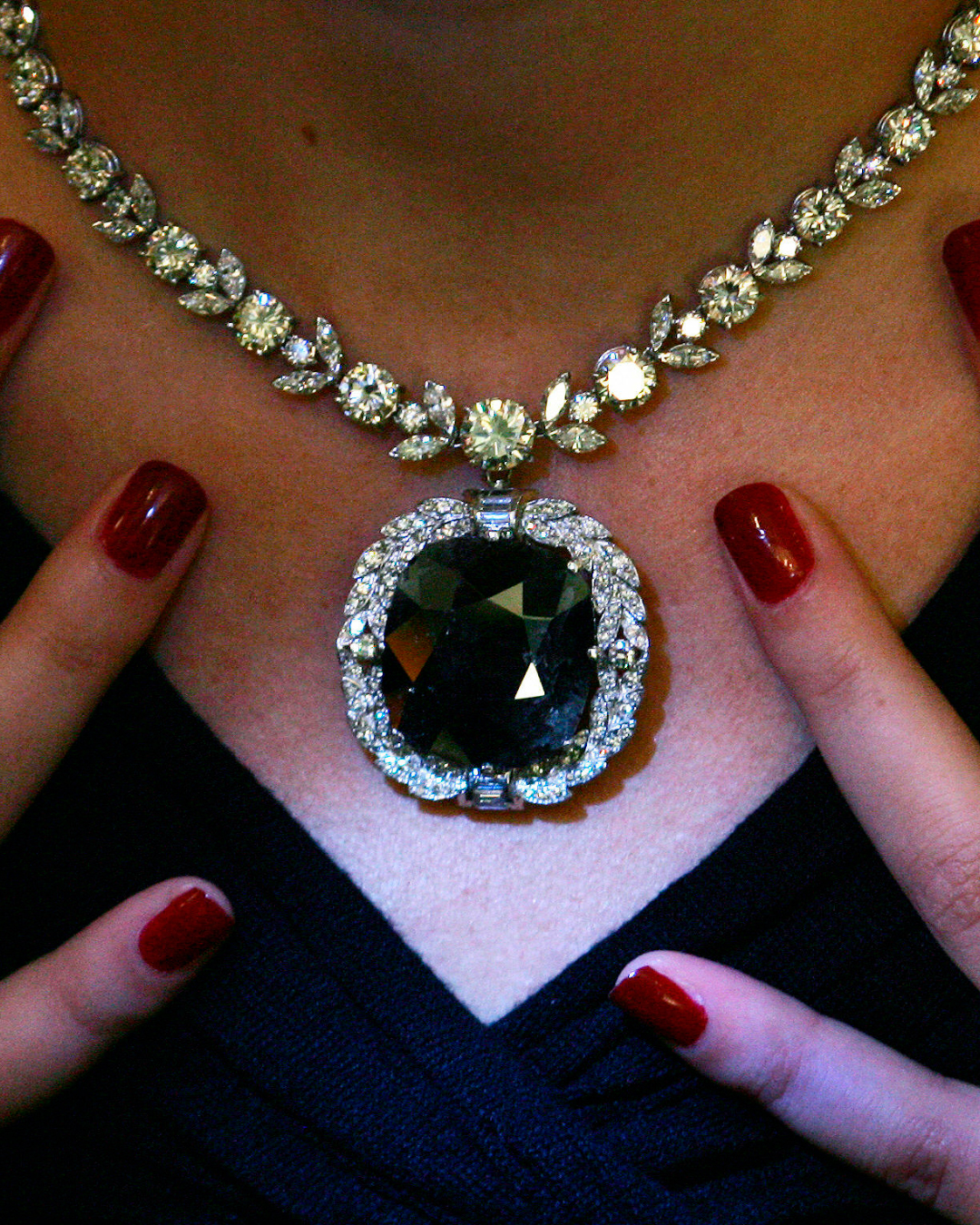
Thankfully, or maybe suspiciously, no violent death has been attached to the Black Orlov since the princesses. In fact, Dennis Petimezas, who owned the diamond from 2004 until 2006, has stated that he had “never felt nervous about owning the Black Orlov.” And that is probably the truth.
The bizarre tale of this black diamond beauty could easily be imagined as a mystery TV series, the kind that keeps a binge-watching audience guessing until the very last minute. And if Hollywood ever decides to bring the story of the Black Orlov to the screen, casting Felicity Huffman would be only fitting. Unwittingly, the actress may have brought luck to the so-called cursed jewel. Once estimated to be worth between $100,000 and $200,000, the diamond sold for $352,000 at Christie’s Magnificent Jewels auction—just months after Huffman decided not to wear it, and perhaps changed her own fate in the process.

